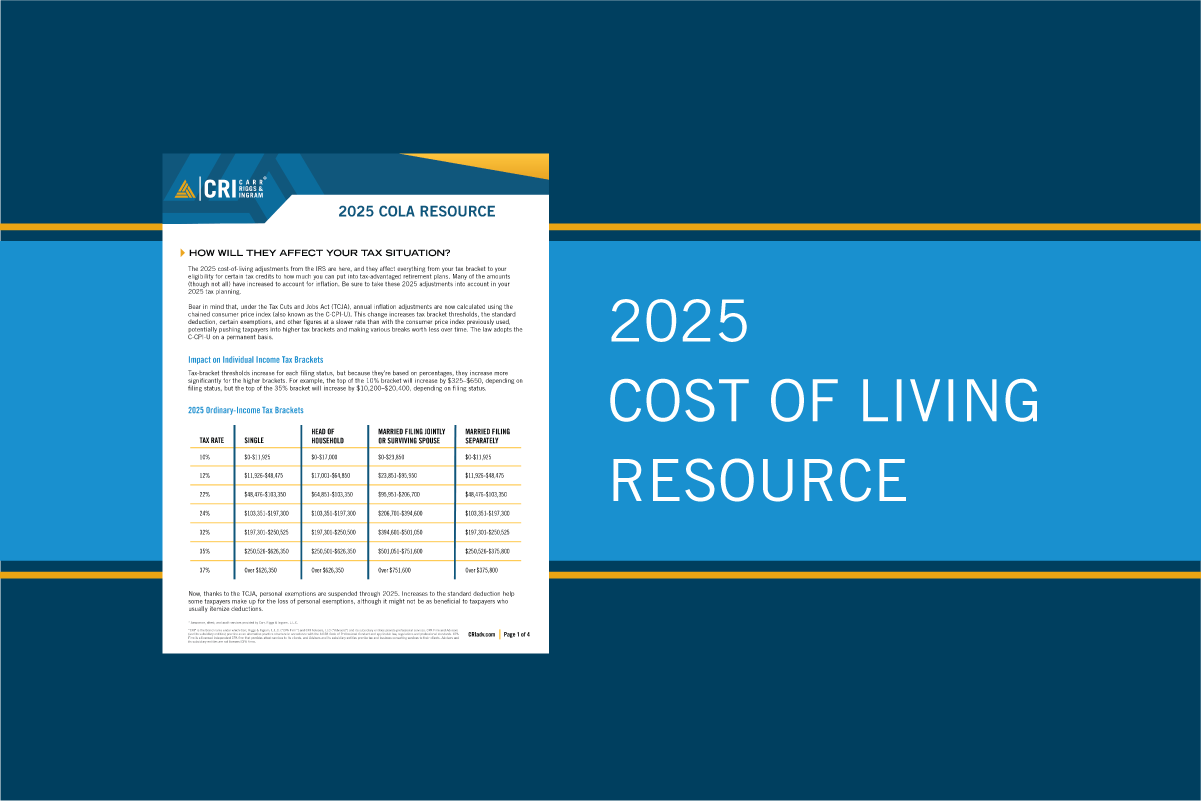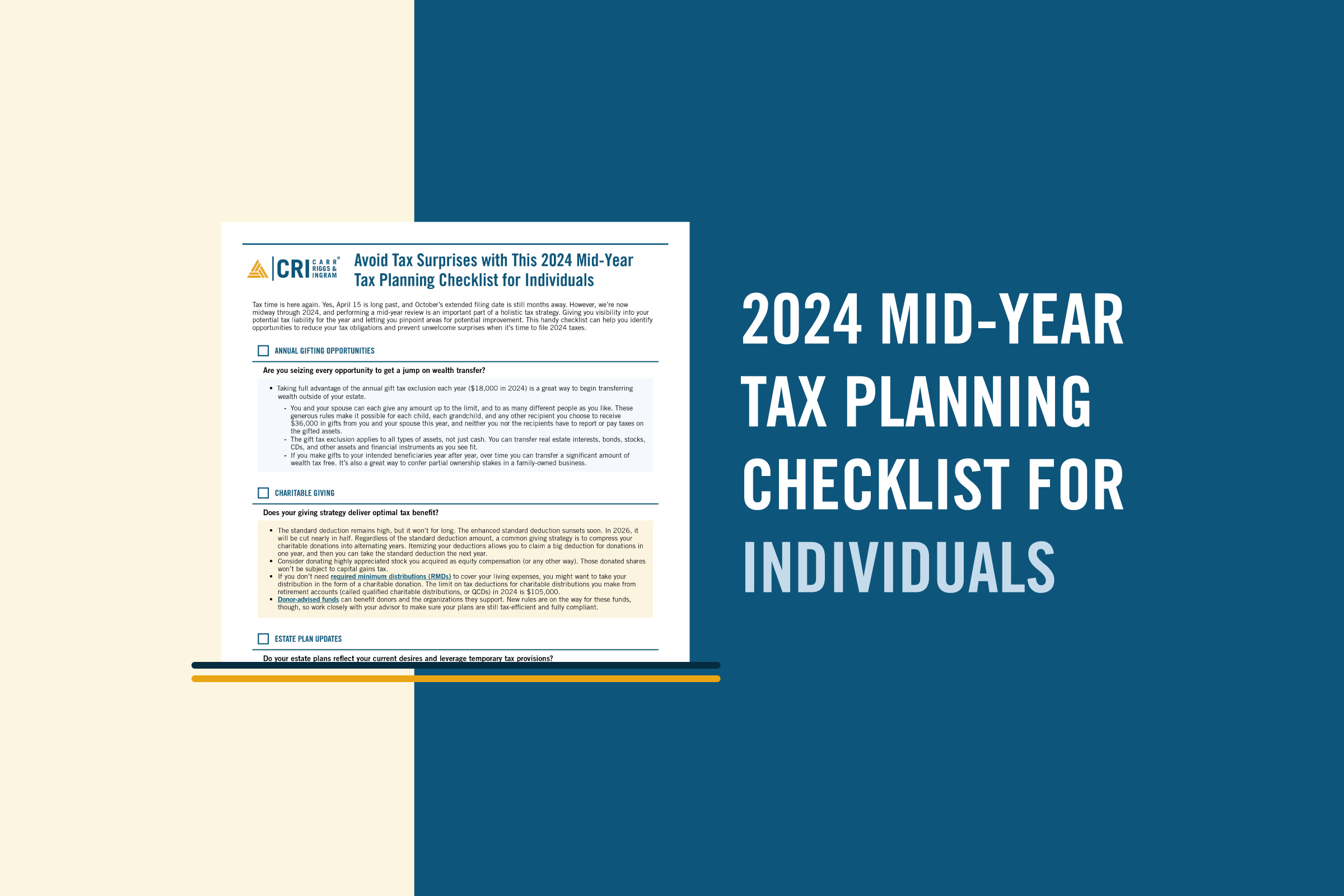Tax Strategies for Special Needs Families
- Contributor
- Ann Marie Sale
Jun 22, 2024
If you are caring for a loved one with special needs, you know the costs can be significant. Fortunately, there are important tax opportunities available to you that will help ease the cost associated with extra care. Let’s explore these tax-saving vehicles, credits, and deductions.
ABLE Accounts
Families should consider investing in an ABLE account, a tax-advantaged account that can be used for qualified disability expenses. ABLE stands for Achieving a Better Life Experience.
The most favorable feature of the ABLE account is that it’s designed to make federally funded disability programs such as Medicaid and Supplemental Security Income (SSI) more accessible. If a person holds more than $1,550 in their name, they lose these government benefits. Assets held in ABLE accounts are disregarded for this asset threshold. Currently, an individual who acquired a disability before the age of 6 can establish an account. Beginning in 2026, SECURE 2.0 increased the age from 26 to 46 allowing many more to qualify for ABLE Accounts. The account can be funded annually (by anyone) with up to $17,000, equivalent to the federal gift tax limit, and can use those assets to pay for disability expenses related to education, housing, transportation, personal support services, health care expenses, and more. The total balance allowed in the account varies from state to state.
While some states do not offer ABLE accounts, individuals are free to enroll in another state’s program, provided that the state is accepting out-of-state residents at that time. Families seeking a plan should exercise due diligence by comparing plans according to their needs. If your family is considering an ABLE account, ask questions about fees, required minimum contributions, withdrawal restrictions, and investment opportunities to ensure that your account will work in the best interests of your family.
529 Plans
Another ideal savings vehicle is a 529 plan. These tax-advantaged accounts offer a flexible, low-maintenance approach for families to save money for qualified education expenses. Specifically, they offer significant tax planning opportunities that will benefit families who are looking for financially smart ways to finance elevated care for their disabled dependent. The following outlines why your family may wish to contribute to a 529 plan.
- The Tax Cuts and Jobs Act of 2017 (TCJA) expanded the definition of qualified education expenses, now allowing families to allocate up to $10,000 of annual tuition for public, private, or religious elementary or secondary schools. Under previous law, a 529 plan could only be used for postsecondary education, such as college tuition. If your loved one with disabilities requires specialized education services, you can now withdraw money for education expenses related to their special needs.
- In 2019, the SECURE Act expanded the definition even further, declaring that funds from a 529 plan could be used to pay for student loans and apprenticeship programs.
- The TCJA also allows families to roll funds from a 529 plan into an ABLE account penalty-free. This means if you have extra funds in your 529 plan that may exceed your projected educational expenses, you can contribute up to $17,000 per year into an ABLE account to pay for other qualified expenses related to the needs of your disabled dependent.
Tax Credits for Dependents
In 2023, the Child Tax Credit is set at $2,000 per qualifying child. Those eligible for the credit in 2023 will receive up to $2,000 per child up to 18 years of age. Individuals earning annual income up to $200,000 ($400,000 for married couples) are eligible for the full tax credit.
The Child and Dependent Care Credit reimburses taxpayers for a percentage of eligible caregiving expenses. In 2023, the maximum credit was $3,000 for one child and $6,000 for two or more children. Qualifying individuals are:
- Your dependent qualifying child under age 13, or
- Your spouse, living with you for more than half of the year, who was physically or mentally incapable of self-care, or
- Your dependent who was physically or mentally incapable of self-care and lived with you for more than half of the year.
Managing Medical Expenses
If your child’s special needs require heightened medical attention, managing those expenses can be overwhelming. One way to make medical expenses more manageable is to contribute to a cafeteria plan, also known as a Section 125 plan, or a Health Savings Account (HSA). Both types of plans are tax-savvy ways to save on income taxes because these plans are never taxed. Be sure to speak with your employer or plan sponsor on the specifics of each plan to determine which one will be best suited for your situation.
Families may also consider taking the medical expense deduction. This option is beneficial if you itemize deductions on Schedule A, where you’d be eligible to deduct amounts that exceed 7.5% of your AGI. For example, if your AGI is $55,000, and your family has $10,000 in medical expenses in 2021, the first $4,125 in expenses would not count toward the deduction, but the remaining $5,875 would be deductible.
Plan Forward to Minimize Taxes
CRI provides comprehensive solutions for families with special needs and advises them through critical financial opportunities, challenges, and transitions. Please contact us with questions. We will be happy to help you create a plan to optimize your finances.




























































































































































































































































































































































































































































































